When it comes to designing a garden that stands out, nothing compares to the clean lines and bold creativity of geometric flower beds. Unlike traditional free-form beds, geometric designs bring order, symmetry, and a modern touch to your outdoor space. Whether you prefer circles, squares, triangles, or even intricate patterns, these flower beds transform ordinary gardens into stylish landscapes.
In this guide, we’ll explore five geometric flower bed ideas that not only beautify your home but also make gardening more fun and structured. Along with design tips, you’ll learn about plant choices, spacing, and maintenance to ensure your geometric garden thrives season after season.
Why Choose Geometric Flower Beds?
Geometric flower beds have been a staple of formal gardens for centuries, dating back to Renaissance and Mughal landscapes. Today, they are making a comeback in home gardens because they combine aesthetics with function. Some key benefits include:
- Visual Appeal: Geometric patterns create eye-catching focal points.
- Efficient Use of Space: Shapes like circles or hexagons maximize planting areas.
- Flexibility in Design: You can tailor the size and symmetry based on garden space.
- Low Maintenance: With defined edges, weeds are easier to manage.
Whether you’re working with a small backyard or a large landscape, geometric beds can fit seamlessly into your garden plan.
1. Circular Flower Beds for Harmony
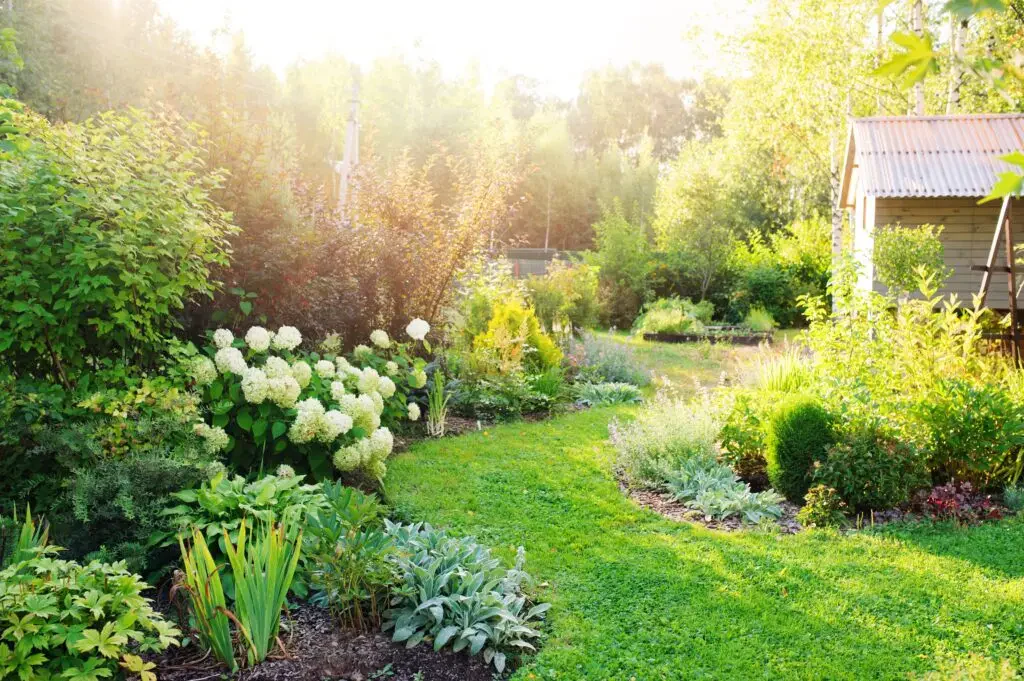
One of the most classic and versatile geometric designs is the circular flower bed. Circles symbolize balance and harmony, making them perfect for creating a peaceful atmosphere in your yard.
Design Tips:
- Place the circular bed at the center of your lawn as a focal point.
- Add layers by creating concentric circles with different plant heights or colors.
- Use decorative edging, like stone or bricks, to define the curves sharply.
Plant Suggestions:
- Tall plants like delphiniums or sunflowers in the center.
- Medium growers such as marigolds or lavender in the middle ring.
- Low-growing flowers like alyssum or petunias at the edge for a cascading effect.
Maintenance:
Circular beds are easy to water and weed because you can move around them effortlessly. Drip irrigation systems work especially well in round designs.
2. Square and Rectangular Flower Beds for Order
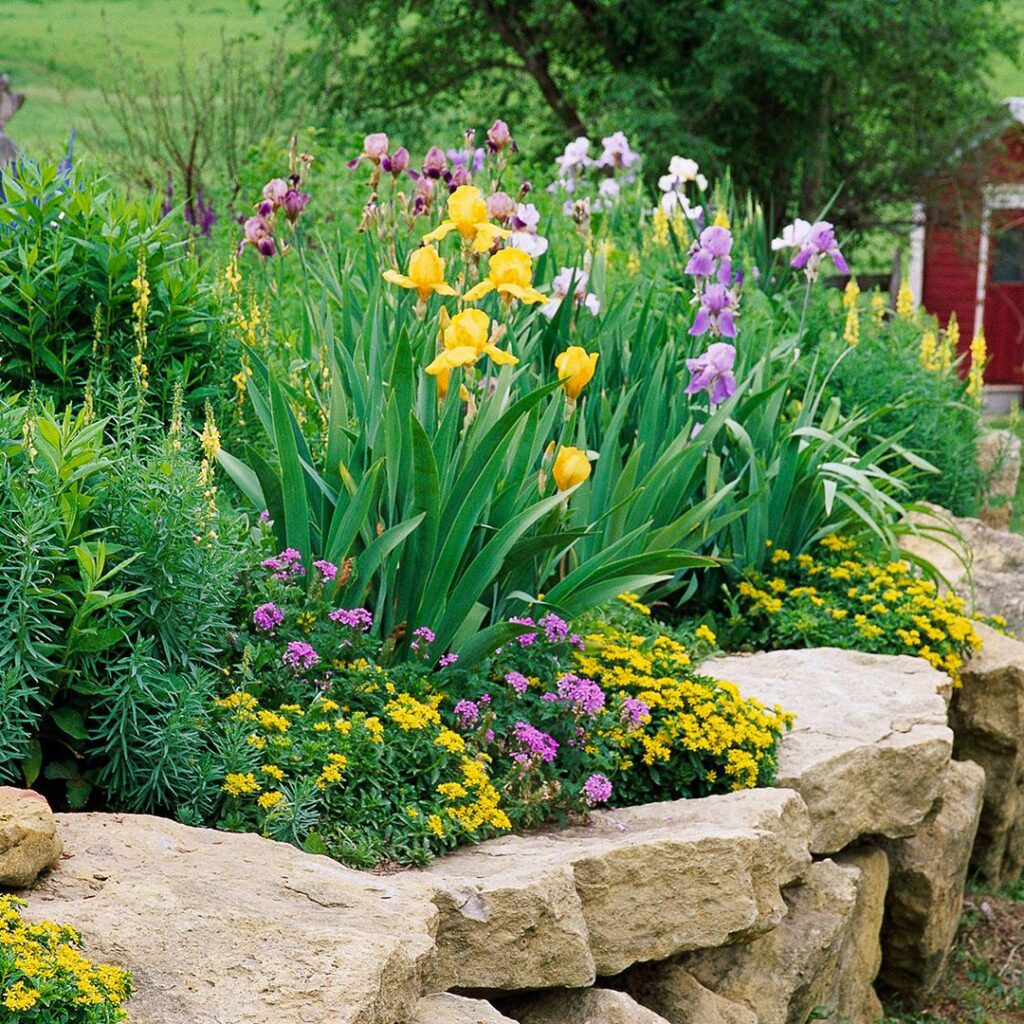
If you love straight lines and formal layouts, square or rectangular flower beds are your best bet. They bring structure to a garden and are excellent for small spaces or courtyards.
Design Tips:
- Use square beds to form a grid-style garden, perfect for vegetables and flowers together.
- Add symmetry by repeating identical plants in each square.
- Surround beds with gravel or grass pathways to highlight the geometry.
Plant Suggestions:
- Herbs and vegetables like basil, lettuce, or peppers mix beautifully with annuals.
- Flowers with bold colors such as zinnias or begonias can make each square pop.
- For modern gardens, use ornamental grasses for a sleek look.
Maintenance:
Square beds are easy to design with raised wooden or stone borders. They are also beginner-friendly because rows are easier to plan and care for.
3. Triangular Flower Beds for Bold Statements
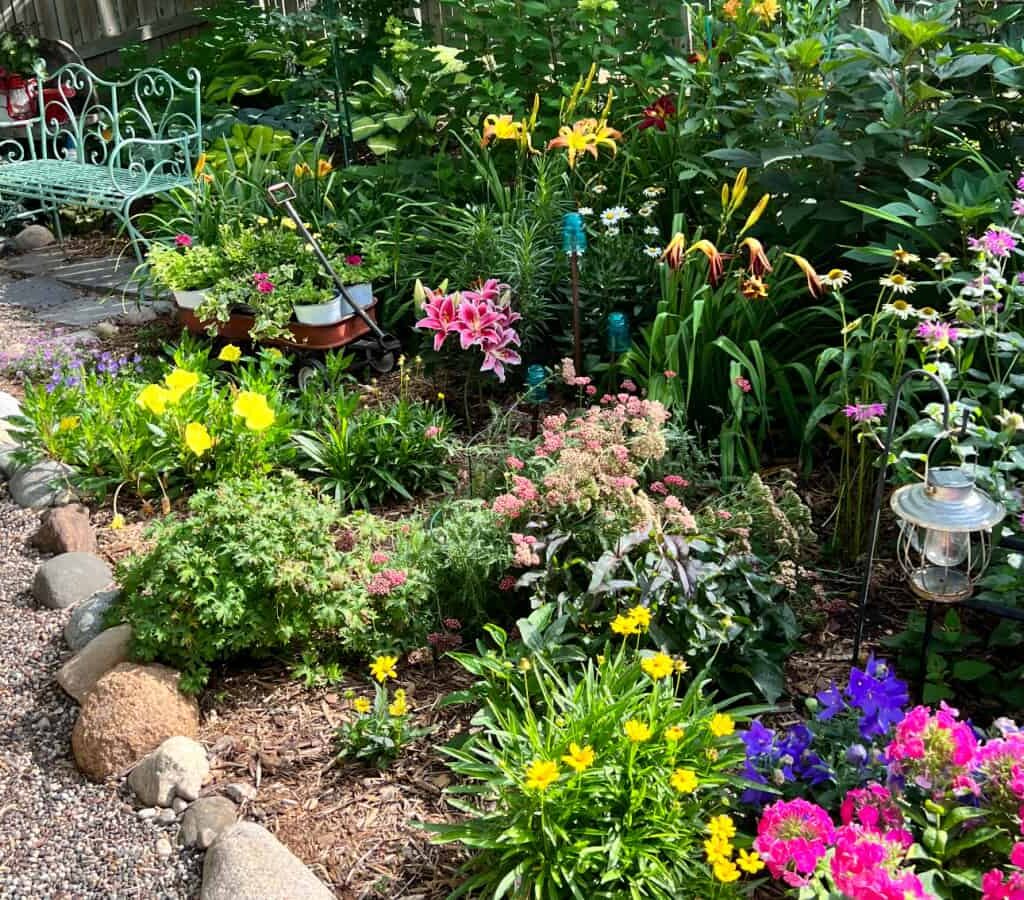
Triangles are less common in garden design, which makes them ideal for gardeners seeking something unique. A triangular flower bed creates a dynamic, contemporary look.
Design Tips:
- Use triangles in corners of the yard where circular or square beds wouldn’t fit.
- Combine multiple triangular beds to create geometric patterns like stars or arrows.
- Highlight the triangular shape with contrasting plants or bold borders.
Plant Suggestions:
- Pointed plants like yuccas or ornamental grasses emphasize sharp angles.
- Use groundcovers such as creeping thyme or sedum along the edges.
- Plant colorful perennials like daisies or geraniums for a cheerful display.
Maintenance:
Since triangular beds often fit into corners, they maximize unused space. Use mulch to keep weeds from crowding the sharp angles of the design.
4. Hexagonal Flower Beds for Modern Style

Hexagons bring a honeycomb-inspired design to gardens. They are both modern and space-efficient, allowing multiple beds to fit together like puzzle pieces.
Design Tips:
- Group several hexagonal beds together to form a geometric mosaic.
- Alternate plant colors in each hexagon for a vibrant checkerboard effect.
- Use paving stones between hexagons for easy access and a polished look.
Plant Suggestions:
- Succulents or low-maintenance perennials thrive in these defined sections.
- Mix bright annuals like pansies, impatiens, or calibrachoa for seasonal interest.
- Try using hexagons for themed plantings—such as one hexagon for herbs, another for pollinator flowers.
Maintenance:
Hexagonal beds make irrigation efficient since water distributes evenly in their compact shape. Use drip lines or soaker hoses for the best results.
5. Star-Shaped Flower Beds for Drama
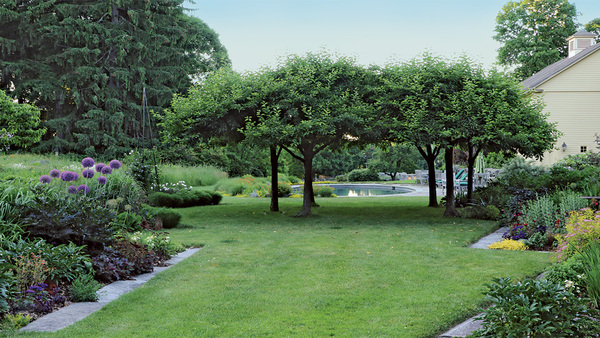
If you want to turn your garden into a showstopper, nothing beats a star-shaped flower bed. This geometric design creates instant drama and elegance, often seen in palace and estate gardens.
Design Tips:
- Place a star-shaped bed as the main focal point of your yard.
- Use paths or different colored mulches to emphasize the star points.
- Plant in a symmetrical color scheme to highlight the shape.
Plant Suggestions:
- Bold flowers like tulips, dahlias, or roses make a striking display.
- Accent points with vertical plants such as foxgloves or snapdragons.
- Fill inner areas with low-growing ground covers to avoid overshadowing the star edges.
Maintenance:
Star-shaped beds can be more challenging to maintain due to their complexity. Use edging materials like bricks, stones, or metal strips to keep the points neat and weed-free.
Tips for Maintaining Geometric Flower Beds
No matter which design you choose, here are some general tips to keep your geometric garden looking sharp:
- Use Strong Edging: Defined lines are crucial in geometric designs. Bricks, stones, or metal edging ensure the shape remains crisp.
- Choose Contrasting Plants: Mixing tall and short plants or bold and soft colors highlights the geometric pattern.
- Plan for Seasons: Select a mix of perennials and annuals so your bed looks lively year-round.
- Regular Pruning: Geometric gardens require neatness, so trim back overgrowth regularly.
- Incorporate Mulch: This keeps weeds at bay and maintains the visual clarity of the shapes.
Final Thoughts
Geometric flower beds are more than just garden features—they are living works of art. From the soothing balance of circles to the dramatic flair of star shapes, these designs can completely transform your outdoor space into a stylish retreat.
Whether you’re a beginner or an experienced gardener, experimenting with geometric designs allows you to combine creativity, structure, and functionality in one beautiful landscape. With careful planning, the right plants, and regular maintenance, your garden will not only bloom but also stand out as a masterpiece of design.
So, pick a shape that resonates with your style, and start creating your own geometric flower bed today—your garden will thank you with color, texture, and timeless beauty.
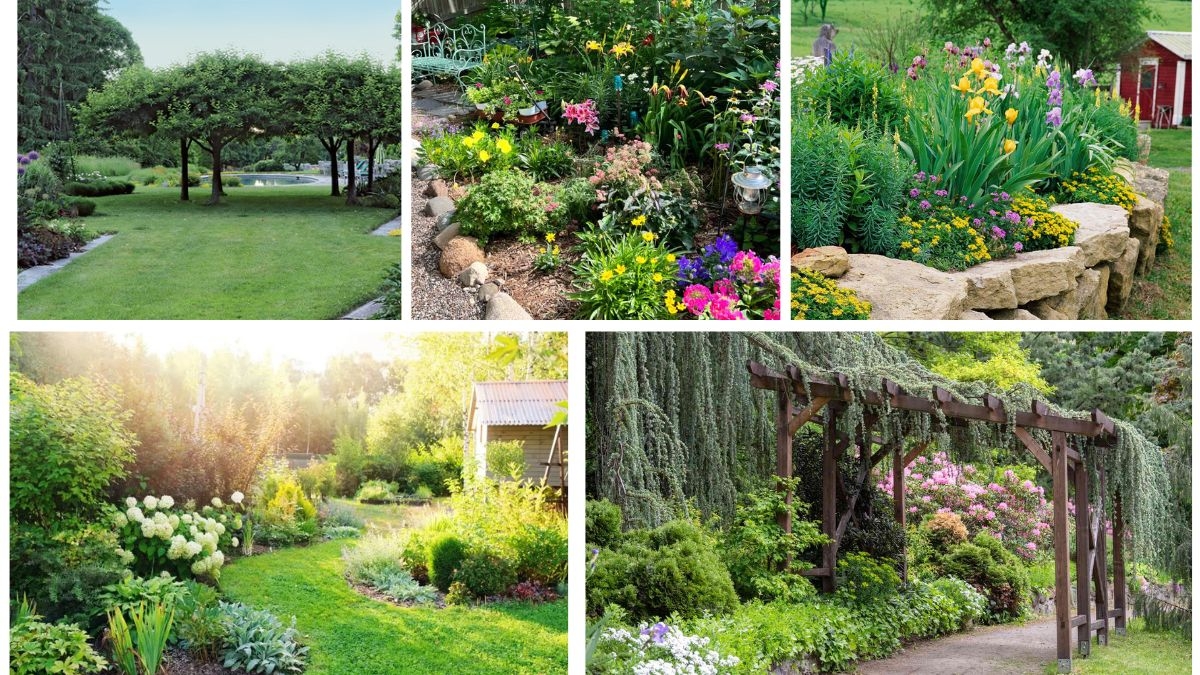




Leave A Comment